Divyanshi Dwivedi
DynamoPMU: A Physics Informed Anomaly Detection and Prediction Methodology using non-linear dynamics from $μ$PMU Measurement Data
Mar 31, 2023Abstract:The expansion in technology and attainability of a large number of sensors has led to a huge amount of real-time streaming data. The real-time data in the electrical distribution system is collected through distribution-level phasor measurement units referred to as $\mu$PMU which report high-resolution phasor measurements comprising various event signatures which provide situational awareness and enable a level of visibility into the distribution system. These events are infrequent, unschedule, and uncertain; it is a challenge to scrutinize, detect and predict the occurrence of such events. For electrical distribution systems, it is challenging to explicitly identify evolution functions that describe the complex, non-linear, and non-stationary signature patterns of events. In this paper, we seek to address this problem by developing a physics dynamics-based approach to detect anomalies in the $\mu$PMU streaming data and simultaneously predict the events using governing equations. We propose a data-driven approach based on the Hankel alternative view of the Koopman (HAVOK) operator, called DynamoPMU, to analyze the underlying dynamics of the distribution system by representing them in a linear intrinsic space. The key technical idea is that the proposed method separates out the linear dynamical behaviour pattern and intermittent forcing (anomalous events) in sequential data which turns out to be very useful for anomaly detection and simultaneous data prediction. We demonstrate the efficacy of our proposed framework through analysis of real $\mu$PMU data taken from the LBNL distribution grid. DynamoPMU is suitable for real-time event detection as well as prediction in an unsupervised way and adapts to varying statistics.
Detection of Malfunctioning Modules in Photovoltaic Power Plants using Unsupervised Feature Clustering Segmentation Algorithm
Dec 30, 2022Abstract:The energy transition towards photovoltaic solar energy has evolved to be a viable and sustainable source for the generation of electricity. It has effectively emerged as an alternative to the conventional mode of electricity generation for developing countries to meet their energy requirement. Thus, many solar power plants have been set up across the globe. However, in these large-scale or remote solar power plants, monitoring and maintenance persist as challenging tasks, mainly identifying faulty or malfunctioning cells in photovoltaic (PV) panels. In this paper, we use an unsupervised deep-learning image segmentation model for the detection of internal faults such as hot spots and snail trails in PV panels. Generally, training or ground truth labels are not available for large solar power plants, thus the proposed model is highly recommended as it does not require any prior learning or training. It extracts the features from the input image and segments out the faults in the image. Here we use infrared thermal images of the PV panel as input, passed to a convolutional neural network which assigns cluster labels to the pixels. Further, optimize the pixel labels, features and model parameters using backpropagation based on iterative stochastic gradient descent. Then, we compute similarity loss and spatial continuity loss to assign the same label to the pixel with similar features and spatial continuity to reduce noises in the image segmentation process. The effectiveness of the proposed approach was examined on an online available dataset for the recognition of snail trails and hot spot failures in monocrystalline solar panels.
Machine Learning as an Accurate Predictor for Percolation Threshold of Diverse Networks
Dec 16, 2022Abstract:Percolation threshold is an important measure to determine the inherent rigidity of large networks. Predictors of the percolation threshold for large networks are computationally intense to run, hence it is a necessity to develop predictors of the percolation threshold of networks, that do not rely on numerical simulations. We demonstrate the efficacy of five machine learning-based regression techniques for the accurate prediction of the percolation threshold. The dataset generated to train the machine learning models contains a total of 777 real and synthetic networks and consists of 5 statistical and structural properties of networks as features and the numerically computed percolation threshold as the output attribute. We establish that the machine learning models outperform three existing empirical estimators of bond percolation threshold, and extend this experiment to predict site and explosive percolation. We also compare the performance of our models in predicting the percolation threshold and find that the gradient boosting regressor, multilayer perceptron and random forests regression models achieve the least RMSE values among the models utilized.
Identification of Surface Defects on Solar PV Panels and Wind Turbine Blades using Attention based Deep Learning Model
Nov 23, 2022Abstract:According to Global Electricity Review 2022, electricity generation from renewable energy sources has increased by 20% worldwide primarily due to more installation of large green power plants. Monitoring the renewable energy assets in those large power plants is still challenging as the assets are highly impacted by several environmental factors, resulting in issues like less power generation, malfunctioning, and degradation of asset life. Therefore, detecting the surface defects on the renewable energy assets would facilitate the process to maintain the safety and efficiency of the green power plants. An innovative detection framework is proposed to achieve an economical renewable energy asset surface monitoring system. First capture the asset's high-resolution images on a regular basis and inspect them to detect the damages. For inspection this paper presents a unified deep learning-based image inspection model which analyzes the captured images to identify the surface or structural damages on the various renewable energy assets in large power plants. We use the Vision Transformer (ViT), the latest developed deep-learning model in computer vision, to detect the damages on solar panels and wind turbine blades and classify the type of defect to suggest the preventive measures. With the ViT model, we have achieved above 97% accuracy for both the assets, which outperforms the benchmark classification models for the input images of varied modalities taken from publicly available sources.
Data-Driven Approach to form Energy Resilient Smart Microgrids with Identification of Vulnerable Nodes in Active Electrical Distribution Network
Aug 24, 2022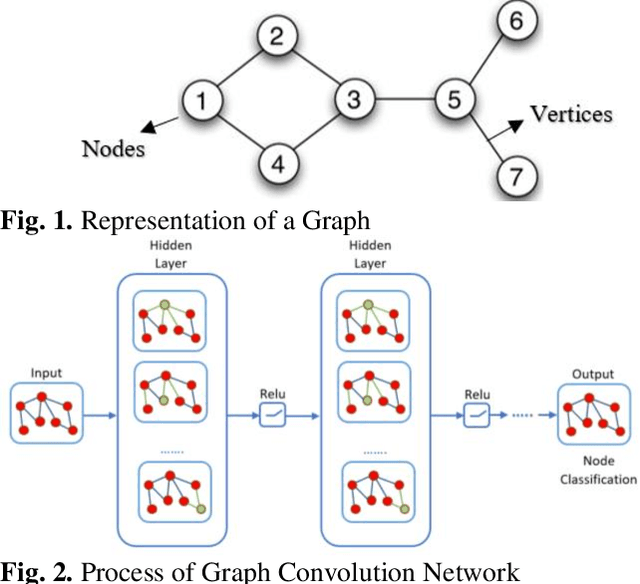
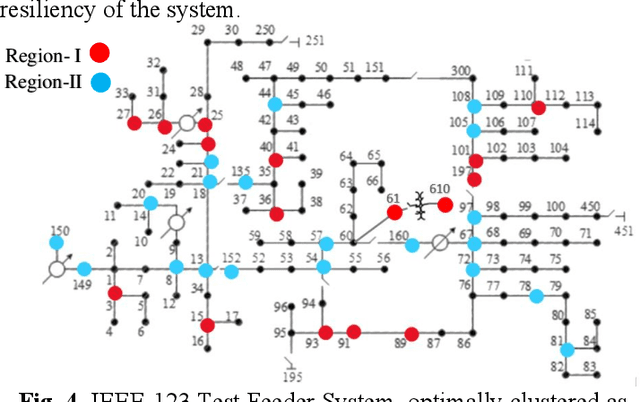
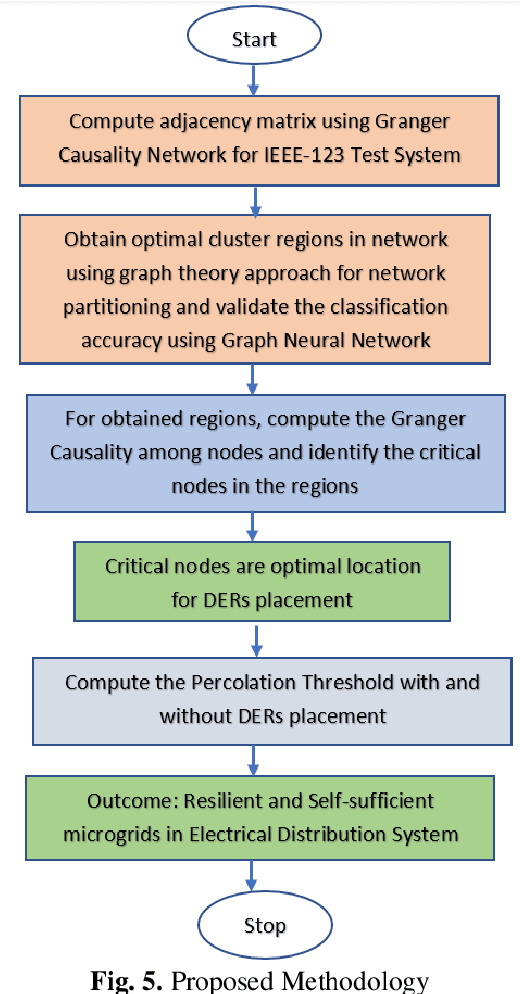
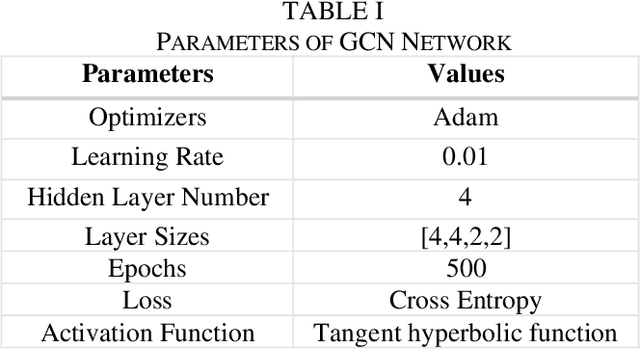
Abstract:We propose a methodology for identifying the optimal DERs allocation with vulnerable node identification into consideration in active electrical distribution network and named those nodes as critical nodes. Power variation in these critical nodes would significantly affect the operation of other linked nodes, thus these nodes are suitable and considered optimal for DERs placement. We demonstrated our method evaluation in a standard IEEE-123 test feeder system. Initially, we partitioned the distribution system into optimal microgrid networks using graph theory. The partitioning was validated using graph neural network architecture for suitable formation of the microgrids. Further, using an effective measurable causality analysis like granger causality, we identified critical nodes in the partitioned microgrid and placement of DERs on these nodes resulted in enhanced network reliability and resiliency. Further, to validate the system performance and energy resiliency, we computed percolation threshold for the microgrid network that indicates the system resiliency after incorporating DERs at those critical nodes. This proposed methodology for the first ensures effective microgrid partitioning, identification of critical nodes, optimal DERs allocation and system resiliency evaluation through data driven analysis approach in a distribution network.
A methodology for identifying resiliency in renewable electrical distribution system using complex network
Aug 24, 2022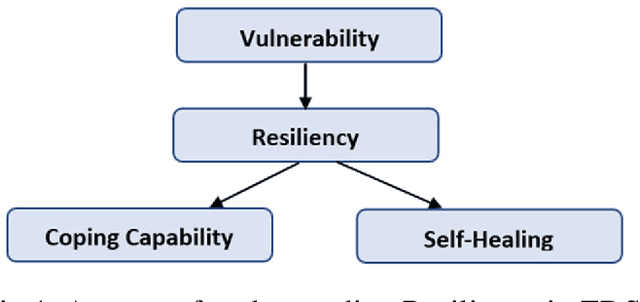
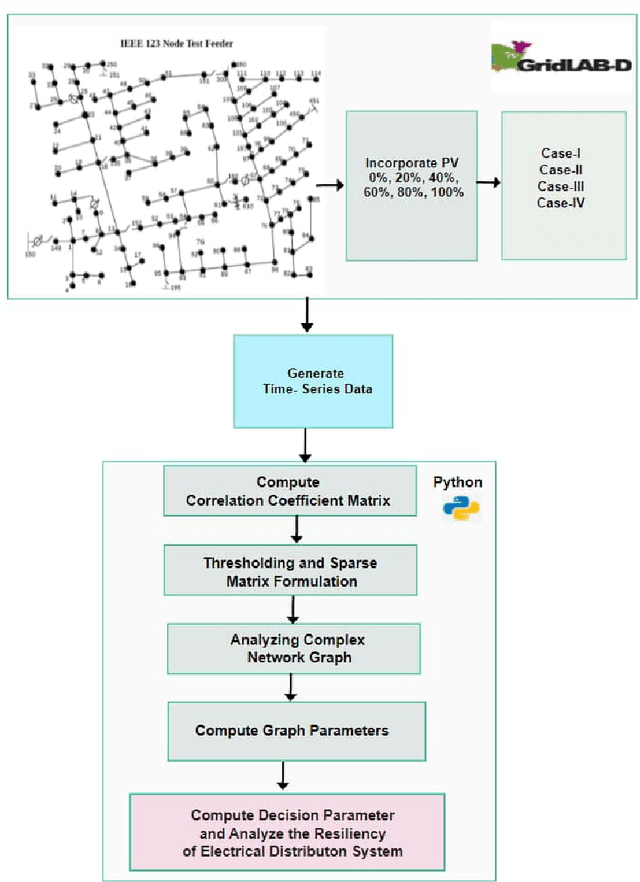
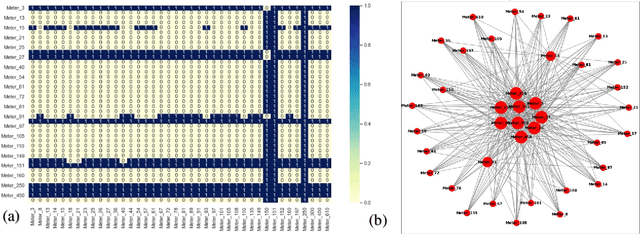

Abstract:Recently, Electrical Distribution Systems are extensively penetrated with the Distributed Energy Resources (DERs) to cater the energy demands with general perception that it enhances the system resiliency. However, it may be adverse for the grid operation due to various factors like its intermittent availability, dynamics in weather condition, introduction of nonlinearity, complexity etc. This needs a detailed understanding of system resiliency that our method proposes here. We introduce a methodology using complex network theory to identify the resiliency of distribution system when incorporated with Solar PV generation under various undesirable configurations. Complex correlated networks for different conditions were obtained and various network parameters were computed for identifying the resiliency of those networks. The proposed methodology identifies the hosting capacity of solar panels in the system while maintaining the resiliency under different unwanted conditions hence helps to obtain an optimal allocation topology for solar panels in the system. The proposed method also identifies the critical nodes that are highly sensitive to the changes and could drive the system into non-resiliency. This framework was demonstrated on IEEE-123 Test Feeder system with time-series data generated using GridLAB-D and variety of analysis were performed using complex network and machine learning models.
 Add to Chrome
Add to Chrome Add to Firefox
Add to Firefox Add to Edge
Add to Edge